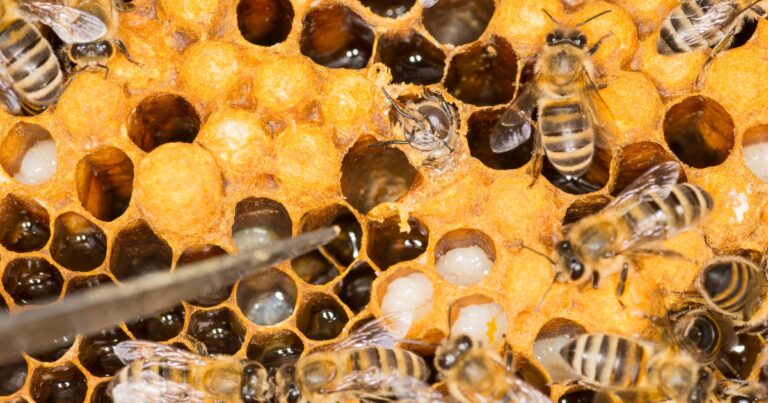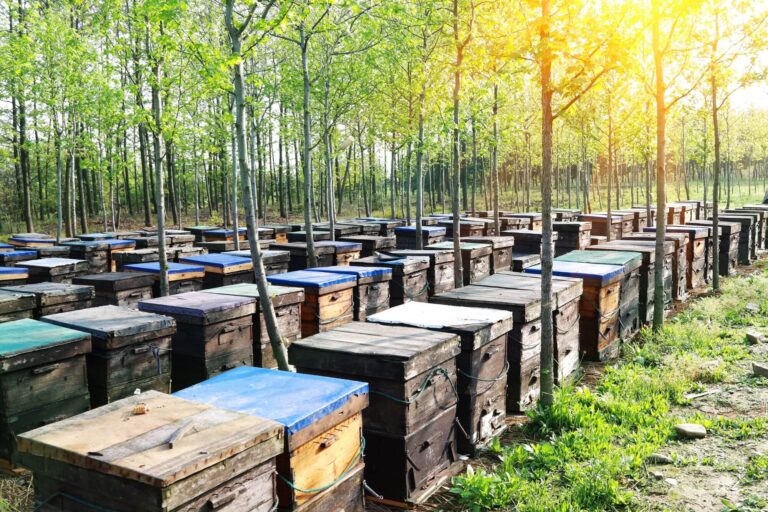The Colour of Honey Part 1: As White as Snow and as Green as the Grass
The Colour of Honey Part 1: As White as Snow and as Green as the Grass. Of course, we all know what honey looks like….
The Colour of Honey Part 1: As White as Snow and as Green as the Grass.
Of course, we all know what honey looks like. In fact, the word ‘honey’ has come to represent the golden-brown colour it is associated with – something like charcoal and mustard. But what about black honey, green honey, or even blue honey?
Let’s start with a honey that has perhaps the blandest colour of all. Rare ‘white’ honey is produced from the flowers of the Kiawe trees in Hawaii. Kiawe honey naturally crystallises to a smooth, creamy white texture; harvesting must be timed carefully to ensure the honey doesn’t crystallise in the comb, since extraction by heat destroys the natural colour and flavour. Madu putih, or white honey, from the Indonesian island of Sumbawa is said to be so unique that it is a ‘national icon’, capable of restoring vitality and accelerating the growth of children, as well as being effective against a variety of diseases. Unfortunately, there is little other available information, and images of Sumbawan white honey range in colour from dark brownish gold to almost pure white, which raises the possibility that some, at least, may have been artificially tampered with.
‘White’ honey with a light amber or almost clear, watery appearance is also produced from a variety of floral sources including white clover, sage, alfalfa and fireweed; typically, it has a mild flavour. White clover honey is particularly recommended as an alternative sweetener for drinks, and for baking and sauces. Some producers use a process of controlled crystallisation to artificially mimic the natural texture and colour of Kiawe honey.
The origins of green honey remain cloaked in mystery – rather like the mist shrouded jungles in which it is said to be found. Apparently the subject of university research in Malaysia, green honey is touted as being ‘carefully sourced from the ancient forests of Borneo’. It is said to have a unique flavour, potent medicinal qualities (including the ability to prevent cancer) and double the protein content of Manuka honey. The distinctive colouration is attributed to chlorophyll, possibly from green algae that is absorbed into propolis, but just how that is supposed to end up in the honey in sufficient quantity to produce a bright green hue has not been adequately explained. We are also told that it is produced in subterranean nests by species of bee from the genus Agapostemon. Coincidentally, these bees – collectively known as ‘metallic green sweat bees’ – are also bright green in colour; they typically nest underground, sometimes in large aggregations, but they are not notable for producing honey. Other sources claim that green honey is produced by rare ground-dwelling honey bees that produce comb – not Agapostemon species.
Predictably, green honey is very expensive in Malaysia. It is also known from the Phillipines, where it is traditionally associated with Palawan Island. In a remarkable similarity to the Malaysian variety, local folklore tells of bees that live underground and produce just a small amount of honey, and of green algae being the source of the vivid colouration. However, the insect called turong that is often associated with green honey is actually a wasp, and scientists have concluded that there is no satisfactory explanation as to how chlorophyll from algae could reasonably be responsible for colouring the honey. In fact, a team from the University of the Philippines Los Baños (UPLB) Bee Program who visited Palawan determined that there was ‘no evidence whatsoever of the existence of this product in nature, or confirmation of its alleged natural sources’. Furthermore, the scientists contend that the green honey that commands such a high price is simply too green to be true and owes its vibrant colouration to the addition of pigments such as food dyes. Green honey may be little more than a great local sales pitch!
Finally (for this instalment) pink honey is far easier to explain. It is a ‘floral fruity fragrance for women’ by Marc Jacobs, and also a UK-based cosmetics business – not something you would spread on your morning toast!



